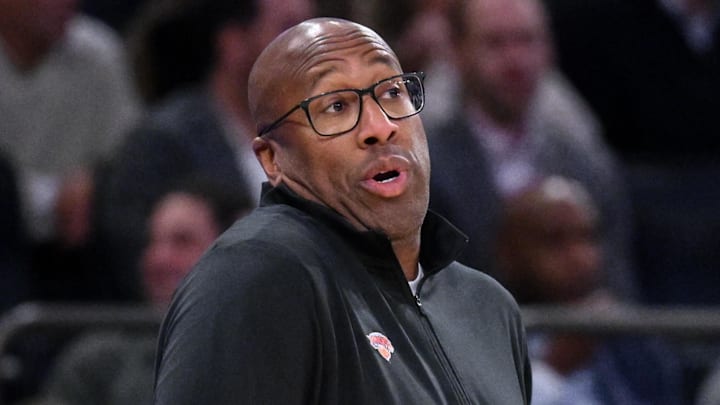Upon taking over for Tom Thibodeau, Mike Brown vowed to speed up the New York Knicks offense. Clearly, he wasn’t messing around. The pace at which the Knicks’ starters are playing is proof.
Filtering out the preseason game in which the starters rested, New York has averaged 101 possessions per 48 minutes in the first half, which is when Jalen Brunson, Mikal Bridges, OG Anunoby, and Karl-Anthony Towns have logged a bulk of their time. That is up from the 99.3 those four notched together last year—a pretty sizable increase when you consider how many of their reps have come beside Mitchell Robinson.
More critically, a larger share of the Knicks’ offense is coming off transition opportunities. Around 20.5 percent of their scoring is being generated on the break during these first-half minutes—the fourth-most in the entire league.
That is a night-and-day shift from last year. Just 13.6 percent of New York’s offense came on the break overall, a share that remained constant when the four core starters shared the floor.
This is a good sign for the Knicks
While the Knicks’ offense is hardly playing like gangbusters at the moment, this is an encouraging trend. Preseason numbers often explore extremes thanks to experimentation with lineups and rotations, particularly in the second half. That New York’s speed and transition presence are up during the first half, when the starters play, should be considered a big deal.
It is an even bigger deal when viewed through the lens of the frontcourt. Robinson is pretty clearly going to start alongside Towns. That runs counter to Brown’s quest for additional speed. KAT is more of a play-railer when on the run, without the ball, and the Knicks’ fast-break frequency has dipped, often significantly, during Robinson’s time on the court in every year of his career.
Getting into early offense with both on the court is an achievement no matter the setting. Brown has also done a nice job sprinkling in lineups with five-out spacing and three guards, while still incorporating members of the starting lineup.
New York is implementing a bunch of changes
Between seeing Brunson off the ball more and the Knicks firing away liberally from beyond the arc, the offense may be hardly recognizable from the Thibs era when all’s said and done. Before that, though, there will be growing pains.
Though their three-point volume is up, the Knicks’ efficiency from deep has so far been a problem. Turnovers are on the higher end for them, too—again, even with the starters on the court. The secondary ball-handling remains an issue, now more so than ever following the surprise retirement of Malcolm Brogdon.
Heck, even the additional looks in transition haven’t always equated to enough speed. We have seen the Knicks’ half-court offense go through the motions.
This is all part of the learning curve. Brown is attempting a fuller-scale overhaul with a superstar, in Brunson, who’s never been asked to play this way. The success or failure of these changes will be a matter of course. For now, the results mean far less than the Knicks actually attempting to reinvent themselves.
